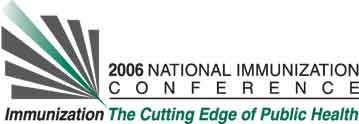Jennifer S. Rota, William J. Bellini, Luis E. Lowe, Russell S. Katz, Paul R. Dyken, Sherif R. Zaki, Wun-Ju Shieh, and Paul A. Rota. Measles, Mumps, Rubella and Herpes Team, Centers for Disease Control and Prevention, 1600 Clifton Road, NE, Mailstop C-22, Atlanta, GA, USA
Learning Objectives for this Presentation:
By the end of the presentation participants will be able to judge the impact of measles immunization on the prevention of cases of SSPE.
Background:
The most severe sequella of measles infection is subacute sclerosing panencephalitis (SSPE), a fatal disease of the central nervous system that generally develops 7-10 years following infection. From 1989 to1991, a resurgence of measles occurred in the United States (US) with 55,622 reported measles cases.
Objectives:
The purpose of the study was to identify cases of SSPE that were linked to the resurgence and to calculate the risk of developing SSPE.
Methods:
Brain tissue samples from 11 patients with presumptive diagnosis of SSPE were tested for the presence of measles RNA. Measles genotypes were determined by reverse transcription-polymerase chain reaction (RT-PCR) and analysis of the sequences of the PCR products. A literature search was conducted for case reports of SSPE patients with measles during 1989-1991.
Results:
The measles sequences derived from brain samples of 11 SSPE patients confirmed the diagnosis of SSPE. Five of the 11 SSPE patients tested by RT-PCR and 7 patients identified from published case reports could be linked to measles infection in the US during 1989-1991. The estimated risk of SSPE was 10-fold higher than the previous estimate reported for the US in 1982.
Conclusions:
Measles vaccination prevents more cases of SSPE than originally estimated. Our data support previous epidemiologic and genetic studies that have found no evidence that vaccine virus can cause SSPE.
See more of Posters
See more of The 40th National Immunization Conference (NIC)

